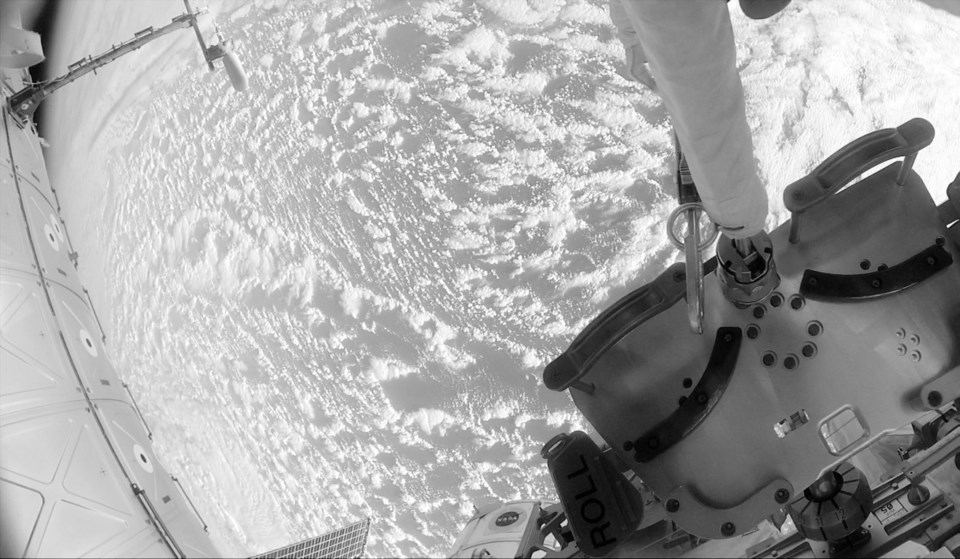What: A Beautiful Planet
Where: Imax Victoria, Royal B.C. Museum
When: Opens Friday
Rating: five stars
If you haven’t yet contemplated the cosmic insignificance of Donald Trump’s presidential campaign, global terrorism and other manmade fiascos, you will after seeing A Beautiful Planet.
Aside from its heart-stopping beauty, this remarkable new IMAX in 3D film, which shows the Earth’s geological diversity from outer space, is also a profoundly moving reminder of how fragile our planet is.
While A Beautiful Planet is a cautionary tale, this eye-popping journey made in association with NASA is also an optimistic, awe-inspiring portrait of Earth from the unique perspective of astronauts on the International Space Station. Equipped with digital cameras, astronauts on three different expeditions capture stunning images of our blue planet and intimate footage of how they live in outer space, under the guidance of director Toni Myers and director of photography James Neihouse.
The international space crew included Scott Kelly, Mikhail Kornienko, Oleg Kononenko, Anton Shkaplerov, Terry Virts, NASA’s Butch Wilmore and Kjell Lindgren, and European Space Agency’s Samantha Cristoforetti.
The film, soothingly narrated by Jennifer Lawrence, is much more than an out-of-this-world travelogue, despite its gallery of images that take your breath away.
Most are taken from the space station’s cupola, which offers a 180-degree view that Neihouse has described as “the best window” on Earth.”
It’s a unique thrill to behold the nighttime images in particular, since they reveal what’s going on in the world’s most famous cities and regions.
Gliding over Spain, Italy, Israel, London, Paris, the Australian Outback, Florida and the Bahamas is a truly spellbinding, spine-tingling experience.
And while pictures of cities closer to home — Montreal, Toronto, New York and Boston, for instance — provide a special thrill, images of global hotspots farther away are as chilling as they’re wondrous.
North Korea, for instance, is ominously dark at night compared with its twinkling southern neighbour, and the bold border between India and Pakistan underscores regional tensions.
While A Beautiful Planet lives up to its title visually, it also illustrates in a startling way the cost of environmental degradation.
That’s obvious on the island of Madagascar, which was once covered in forests but now appears brown. The slash-and-burn approach to Brazil’s rainforests is also distressingly apparent.
So is the dramatic depletion of the Colorado River Basin, which supplies water to 40 million Americans in seven states but has sunk nine metres in the last 75 years.
The film also reveals the impact of fracking fires in the Gulf of Mexico and glacial melting in Greenland.
Another somewhat startling revelation is that the Earth, which we have long believed spins on an axis, actually has a mysterious wobble.
Myers and her team sparingly employ visual effects, as when satellite images of the Earth’s ocean-covered surface dissolve into computer-generated images of the arid landscape of Mars, which has similarities.
The documentary’s other most striking images include aerial shots of lightning bolts popping like flashbulbs during several lightning storms across the Earth’s surface, and brilliant auroras.
The filmmakers intercut images of such natural wonders with intimate footage from the space station.
The film shows NASA commander Terry Virts working out on a treadmill, noting that astronauts must work out at least two hours daily because zero gravity so adversely affects their bodies.
Cristoforetti also has fun trying to drink espresso out of a cup, and having her hair cut by a crewmate, who quips it’s the most dangerous part of his mission.
We see astronauts celebrating Christmas together, and the comical spectacle of Cristoforetti helping Wilmore shimmy out of his tight-fitting spacesuit.
Much more suspenseful are shots that Wilmore and Virts, using GoPro cameras, took of themselves during a harrowing spacewalk, with the Earth bobbing up and down the background.
You’ll never look at the planet we call home the same way again.



